
Practical Work with a Camera, Composition Techniques
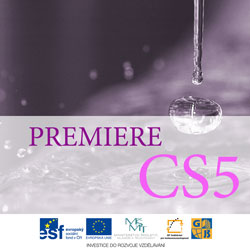 Content of the lesson:
Content of the lesson:
- Composition of Shot
- Golden Cut
- Shot Length
- Shot Motion
- Zoom (transfocator)
- Axis Rule
- Shot Type
- Lighting
- White Balance
Shots Composition
Composition of Shot
This term means distribution of objects within a shot frame. It influences a viewer perception and the viewer then judge the shot from the aesthetic point of view.
- Symmetric (balanced) composition - also median (central) composition. An object is in the centre of a shot but a human brain does not perceive this fact positively. It even disturbs because other objects draw more attention very often and the one in the centre becomes interfering.
- Asymmetric composition - it is quite strange how it affects us when an object is placed outside the centre of a shot frame. It is much better for human perception. Because the object is outstanding, it is the first one that attracts our attention. What is more, a viewer then looks over the rest of a shot without the impending influence.
Golden Cut
It is also called the rule of thirds because a shot is divided into the same thirds in horizontal and vertical directions. The thirds do not have to be the same in both these directions at the same time; it is enough they are the same in each separate direction. Then an imaginary grid is created. Important points originate in places where horizontal and vertical lines intersect, and we try to place the objects we want to film into these places.
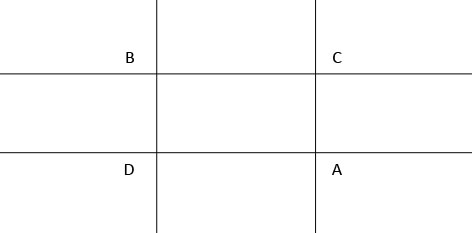
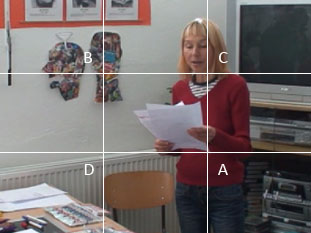
Shot Length
The right length of a shot is from 4 or 5 seconds (for a later cutting preferably from 7 to 10 seconds) up to 30 or 40 seconds. It is not good to film so called never-ending shots. They are long and dull. A viewer is not able to notice the shots that are shorter than 4 or 5 seconds and there is also no place for a latter cut.
Shot Motion
To avoid an unwanted motion of camera use a tripod. If you do not have a tripod, try to stabilize your camera by putting or leaning it somewhere.
Instead of moving your camera to get dynamic shots, it is better to film static shots with dynamic content. If you want to move your camera, set it into your initial point, start shooting, wait for a while (because of the cuts between the single shots), then smoothly move your camera from a slow start, over the innate motion to a slow landing to the final point and stay inactive for a while before you switch your camera off.
Zoom (transfocator)
Constant use of a zoom during shooting belongs to most frequent mistakes of a beginner camera operator. It is necessary to know that a camera does not have this function to zoom all the time but to avoid changing zoom lens.
And what is the purpose of changing objectives, which is replaced by the zoom? It is used because there is a wide variety of shots (the term film frames is also used) and they can be set by this function before a shot is filmed. Unit, semi-unit and detail can be named among the most frequent ones.
Axis Rule
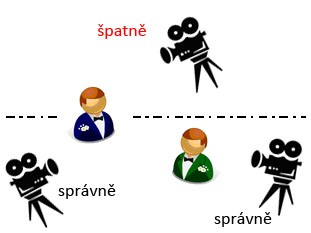
This rule assumes a fictitious axis that goes e.g. through two persons who talk to each other. This axis is used because a viewer has to have the feeling that these two people are looking at each other after editing the shot. If we shot from one side of this fictitious axis and than from the other side, a viewer would feel that these two people are looking in one direction. This rule is applied e.g. when shooting a football match. If cameras were opposite each other on a stadium and shoot the match in turns, viewers would get lost in the space.
Shot Types
- Big unit - the environment where we used camera is introduced to a viewer by this shot. It is the space around us, the space that we can see. It is a shot of a city, buildings, countryside, an airport with planes landing or taking off, a port with ships, roads with cars driving in both directions. It can also be a shot of interiors a factory hall or a mall. Individuals in these shots cannot be recognized easily because they are not main objects for this type of a shot.
- Unit - main objects and their surroundings (e.g. individuals can be recognized easily in this type of a shot). A teacher by the board, the table and the first row of desks can be a good example. This shot shows not only a concrete object but also its surroundings where the object is. If the individual is only caught without the surroundings, we could not recognize even he/she is a teacher. In short, it is a space where something happens.
- Semi-unit - objects or people that are in a shot cannot be seen all and this is the difference from the unit shot. If we shoot people, we should shoot 3 at the most. It is a sight in which we are used to perceive people. If there is a speaking person in our shot, we can focus attention on this person.
- Semi-detail - looks like a semi-unit; depicts e.g. a half of a car. If it is a person, we can see her/him from the waist to the head. This type of a shot intensifies the contact with a viewer. It enables to get to know a personality of that person. Using this type of a shot we emphasize a given object.
- Detail - this type of a shot captures objects from a very short distance (very closely). Surroundings are not important at this moment and are totally separated. It is e.g. a shot of a letter when we can even read the text, it can also be a car made, used shell lying on the floor, a signature on some document. Detail means emphasize on a concrete situation.
- Big detail - in this type of a shot we are interested in a concrete part of some object, e.g. tears in eyes, clocks counting down the end of a match, detector twinkling on an exploder. The purpose of this is to provoke emotions.
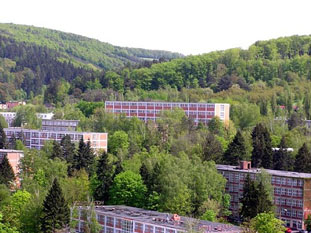
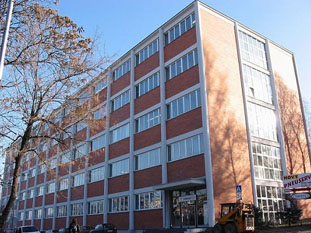
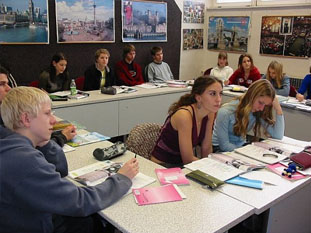
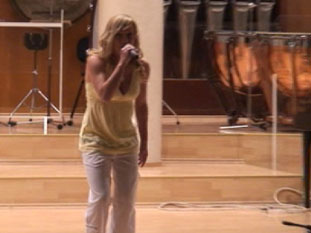
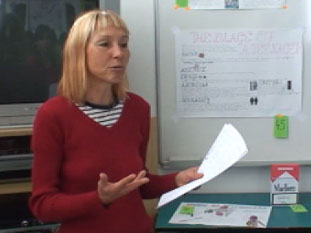

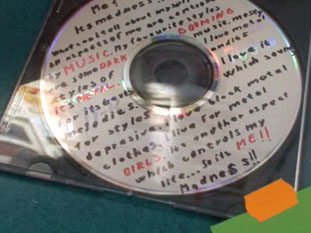
Lighting
Lighting is a very important thing that forms overall impression from a shot video.
- Main light - it has the biggest influence on the light of a set and light the taken object from the front. It is generally placed right in front of an object, slightly from one side.
- Additional light - is used to stifle shadows (shades) that are created by the main light. Additional light is set in the rate of 2:1 with the main light; this means that the additional light is turned down by half or we move it to a double distance than the main light. Additional light is placed on the opposite side from the main light.
- Rear light - lights behind an object against a camera. It emphasizes the object, its contours.
- Background light - pre-lighting of a background. It is not always possible to pre-light the background (e.g. exterior).
source: Svštla - nasvÚcenÚ scÕny
White Balance
It is a setting of an equipment so that to get the best and the most real colours of a picture. To get the image in the way a human eye can see it. While shooting, we can get into different light conditions that influence the light such as a bulb, a fluorescent tube or any other artificial light; it can also be a flash light. Other possibilities are day light during clear skies or during a cloudy day. It is necessary to prepare our equipment for every similar situation and set it right.
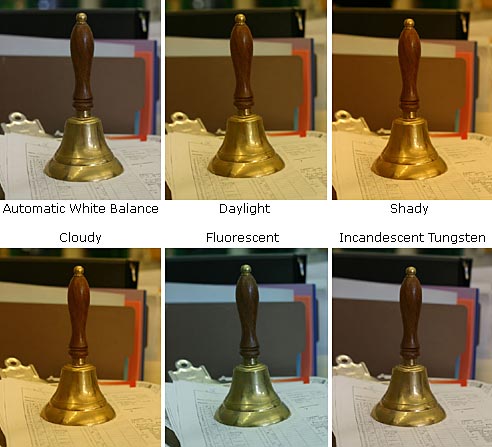
White balance (source: www.sjcontent.com)
Additional Texts
- http://http://www.tvfreak.cz/art_doc-13EDB3DCED8E913CC125727C0059B32D.html
- http://www.fotografovani.cz/art/fozak_df/rom_comp8_rules4.html
- http://www.dimenze3.cz/view.php?nazevclanku=kompozice-rozmisteni-prvku-po-plose-obrazu&cisloclanku=2007060001
- http://www.amacom.cz/velikosti-zaberu/4a/
- http://kacatko.wordpress.com/2006/09/18/zlaty-rez-ve-fotografii/
- http://www.digimanie.cz/art_doc-68E1BFA8DE989F9FC12571DA005AD413.html
Questions
- What is the difference between symmetric and asymmetric composition?
- Explain the rule of a golden cut.
- What is the rule of an axis?
- What types of shots do you know and what are they used for?
- What types of lights are used to light a scene?
- What is white balance used for?